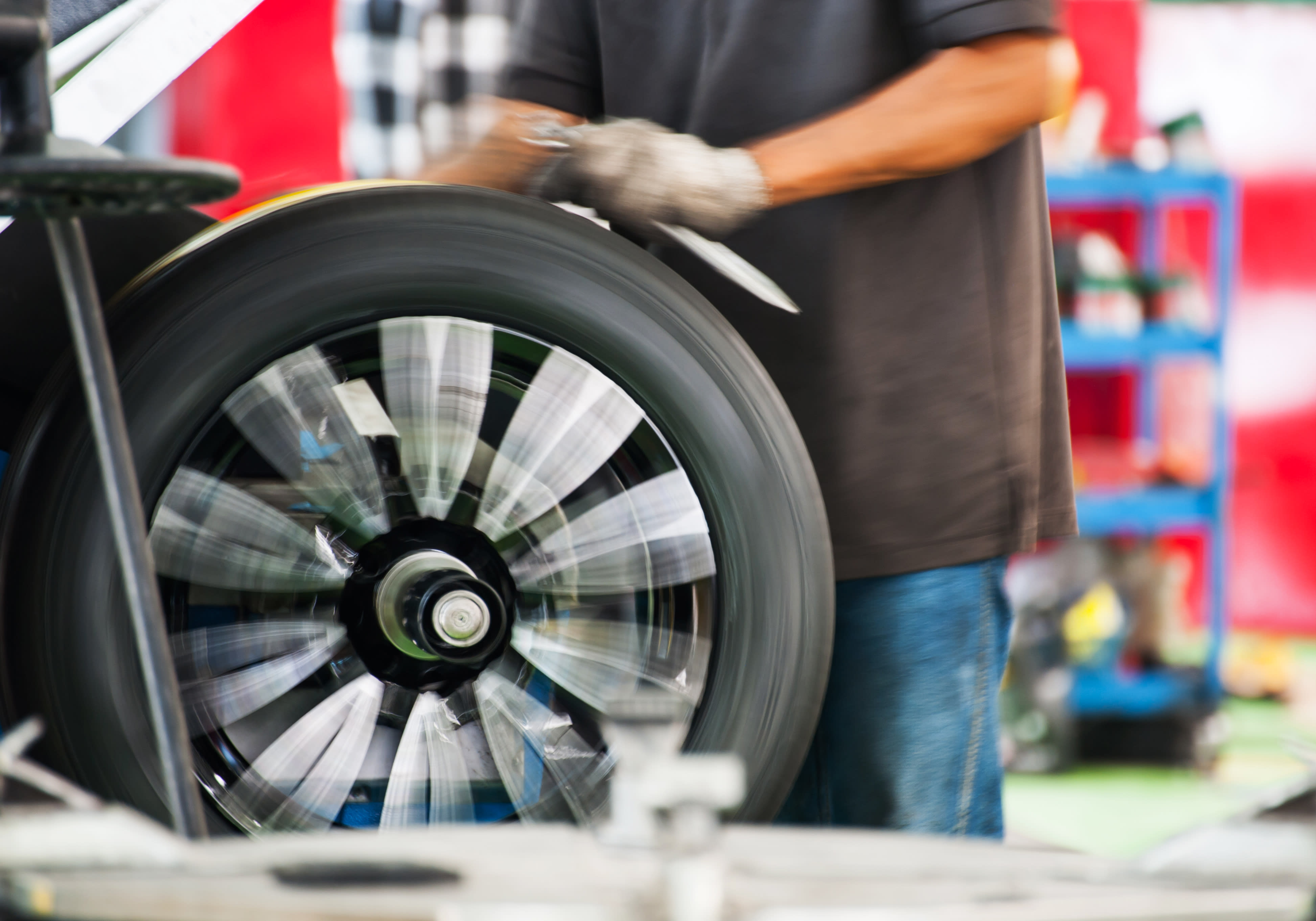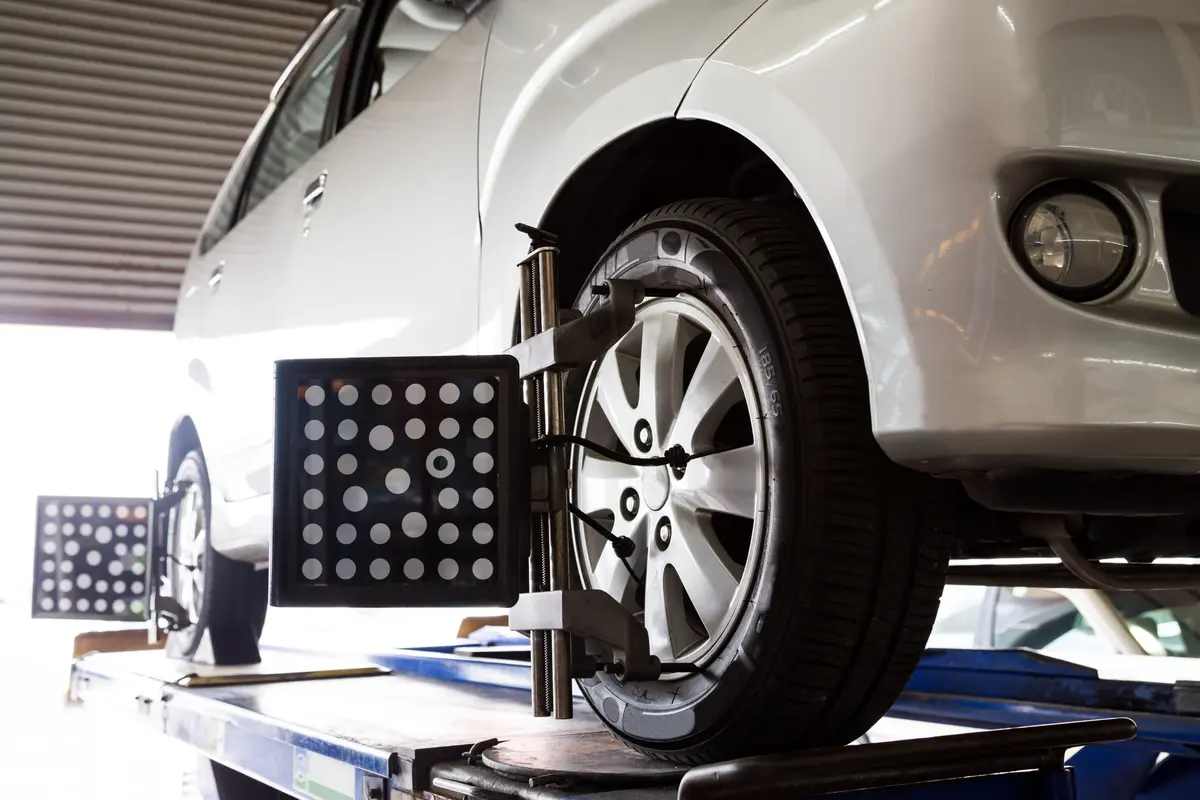Tire Maintenance & Safety
Best price guarantee
Tire replacement coverage
24/7 roadside assistance
Easy returns
The average lifespan of a tire is influenced by a multitude of factors, from driving habits and road conditions to regular maintenance practices. Understanding these elements can help you make informed decisions about when to replace your tires and how to extend their life.
Proper tire care not only ensures your safety on the road but also saves you money in the long run. By following a few simple maintenance tips, you can maximize your tires' performance and longevity.
In this article, we'll explore the factors that affect tire lifespan and provide practical advice on how to keep your tires in top condition. Whether you're a seasoned driver or a novice, these insights will help you get the most out of your tires.
How to Extend Tire Life
Ensuring your tires last as long as possible requires a proactive approach to maintenance. By integrating a few essential practices into your routine, you can significantly enhance tire durability and maintain consistent performance. Here's how to keep your tires in peak condition.
Step 1: Check Tire Pressure Regularly
Proper tire pressure is essential for maximizing tire lifespan and ensuring safe vehicle operation. Insufficient air pressure can increase friction, leading to higher fuel consumption and reduced control over the vehicle. Conversely, too much air pressure can result in excessive wear along the tire's center, diminishing traction.
Importance of Pressure Monitoring
To maintain peak tire performance, assess pressure levels routinely, ideally once a month. Temperature shifts can cause notable changes in tire pressure—cold weather can decrease PSI, while warm weather might increase it. Utilize a precise tire gauge to confirm that each tire adheres to the manufacturer's recommended pressure, which is typically found in the owner’s manual or on the placard in the driver’s door frame.
- Adapting to Weather: Seasonal temperatures necessitate adjustments. During winter, tires may deflate faster due to the cold, while summer heat can lead to overinflation as air inside expands.
Impact of Inaccurate Tire Pressure
Ensuring the correct pressure is crucial for both tire longevity and road safety. Tires that are not inflated to the recommended levels can become overheated, risking blowouts. Accurate inflation supports optimal braking and handling, crucial for safe driving across all conditions.
Incorporating regular tire pressure checks into your maintenance routine not only prolongs tire life but also enhances vehicle safety and efficiency.
Step 2: Rotate Tires Every 5,000 to 7,000 Miles

Regularly repositioning your tires at set intervals is essential for maximizing their lifespan. This practice ensures that all tires experience a balanced amount of wear over time, as different positions on the vehicle can result in varying degrees of tread erosion due to the distribution of weight and driving dynamics.
Advantages of Consistent Tire Rotation
Performing tire rotations at specified intervals significantly contributes to the uniformity of tread wear. When tires wear evenly, they maintain optimal traction and handling capabilities, which enhances overall vehicle safety. This approach also minimizes the likelihood of developing uneven tread patterns, which can lead to discomfort while driving.
- Improved Road Handling: Ensuring even tread wear enhances grip and stability, which are crucial for safe driving conditions.
- Economic Benefits: By promoting uniformity in tire wear, you reduce the frequency of tire replacements, thus lowering long-term maintenance expenses.
Adapting Rotation Techniques
Refer to your vehicle's owner manual for guidance on the most suitable rotation pattern, as these can differ based on the type of vehicle and tire specifications. Commonly used patterns include the rearward cross and forward cross, each addressing distinct wear tendencies. Engaging with a knowledgeable tire specialist can ensure that rotations are executed accurately, preserving the integrity and performance of your tires over time.
Step 3: Monitor Tread Depth
Keeping track of tread depth is essential for ensuring optimal tire performance and safety. Adequate tread depth allows tires to maintain traction, especially under challenging conditions like wet or icy roads. As tread wears down, the ability to grip the road surface effectively decreases, affecting overall control and stopping power.
Evaluating Tread Depth
To confirm that your tires are fit for the road, regularly evaluate tread depth. A simple tool, such as a tread depth gauge or a penny test, can provide precise measurements. If the tread measures at or below 2/32", it's time to replace the tire to maintain safe driving conditions. Regular checks help ensure that your tires can handle different road surfaces safely.
- Routine Checks: Conduct monthly inspections for each tire, as this can help identify any potential issues early, safeguarding against unexpected tire failures.
Identifying Wear Patterns
Analyzing tread patterns can offer insights into possible alignment or suspension issues with your vehicle. Seeing uneven wear—such as more wear on the inner or outer edges—could signal a need for alignment correction. Addressing these discrepancies promptly can prevent further problems and extend the lifespan of your tires.
- Built-in Wear Indicators: Pay attention to the tread wear indicators that manufacturers incorporate into the tire design. These indicators become visible when the tread wears to a point that necessitates replacement, ensuring you maintain adequate grip and safety on the road.
Step 4: Align and Balance Tires Annually

Keeping your vehicle's tires properly aligned and balanced is crucial for ensuring a smooth ride and extending tire life. Misalignment occurs when the tire angles deviate from the manufacturer's specifications, potentially leading to uneven wear and affecting vehicle handling. Over time, minor misalignments can grow, impacting overall stability and safety.
Importance of Tire Alignment
Regular tire alignment checks are vital, especially for those driving on rough or uneven roads. These conditions can easily disrupt your vehicle's alignment, causing steering drift, pulling to one side, or uneven tread patterns. A professional alignment service sets the wheels so they are parallel to each other and perpendicular to the ground, ensuring optimal contact with the road.
- Improved Handling: Proper alignment enhances steering precision, making your vehicle more responsive and easier to control.
- Prevention of Tread Issues: Correct alignment reduces irregular wear, promoting longer tire life and consistent performance.
Balancing Tires for Optimal Performance
Tire balancing involves adjusting the weight distribution across the tire and wheel assembly to ensure smooth rotation. As tires wear, they can become imbalanced, leading to vibrations felt through the steering wheel or seat. Balancing addresses these issues, improving ride quality and tire durability.
- Comfort and Stability: Balanced tires eliminate unwanted vibrations, providing a more comfortable and stable driving experience.
- Extended Tire Longevity: By ensuring even weight distribution, balancing helps avoid premature wear, thereby increasing the lifespan of your tires.
Regular maintenance, including alignment and balancing, safeguards your tire investment. Properly aligned and balanced tires not only enhance driving comfort but also improve the efficiency and performance of your vehicle.
Step 5: Avoid Harsh Driving Conditions
Driving behavior plays a critical role in the lifespan of your tires. Sudden stops and quick starts can strain the tires, leading to faster tread wear. Such driving habits generate excessive heat and friction, which can degrade tire materials prematurely. Transitioning to a smoother driving style helps preserve tire quality and enhances both fuel efficiency and vehicle handling.
Navigating Road Hazards
Road conditions present various risks that can impact tire health. Potholes, curbs, and debris can cause alignment issues, sidewall damage, or even punctures. Approach these obstacles with caution, reducing speed to minimize potential damage. Regularly checking your tires for visible damage after encountering such challenges can help maintain their reliability and performance.
- Proactive Driving: Anticipate potential road hazards and adjust your path accordingly. Slowing down when approaching uneven surfaces significantly reduces the risk of tire damage.
Adapting to Weather Conditions
Weather conditions greatly influence tire performance and safety. In wet, icy, or snowy environments, cautious driving is crucial to maintain traction and prevent slips. Tires must work harder to grip the road, which can increase wear if not managed carefully. Adjusting speed and increasing following distances in adverse conditions helps protect tire integrity.
- Seasonal Readiness: Choose tires that suit your regional climate. While all-season tires are versatile, areas with harsh winters may benefit from winter-specific tires for enhanced safety and effectiveness.
Final Thoughts on Tire Maintenance
Engaging in consistent tire maintenance not only enhances safety but also maximizes your tire investment. Regular care procedures ensure that your tires remain reliable and perform optimally under various conditions. By prioritizing these maintenance practices, you safeguard against unexpected issues that could compromise your vehicle’s functionality and your safety on the road.
Key Maintenance Insights
- Frequent Safety Checks: Regularly examine your tires for signs of wear or damage. This practice helps catch potential issues early, which can prevent unexpected breakdowns and extend tire life.
- Optimal Storage Conditions: For those using tires seasonally, storing them properly is crucial. Keep them in a cool, dry environment to prevent any material degradation. This ensures that your tires retain their quality and performance when not in use.
Maintaining awareness of your tires' condition and adapting your care routine accordingly can make a significant difference. When uncertainty arises regarding tire health, consulting a tire replacement guide or a tire professional can offer clarity and help you make informed decisions. This ensures that your tires continue to deliver the safety and performance expected throughout their lifespan.
By following these essential tire maintenance tips, you can maximize the lifespan of your tires and ensure a safer, more comfortable driving experience. Remember, regular care and attention to your tires can save you money in the long run and provide peace of mind on the road. When it's time to replace your tires, shop for tires online with us and find the best deals to keep you rolling smoothly.
Ready to find the perfect tires?
Search By
